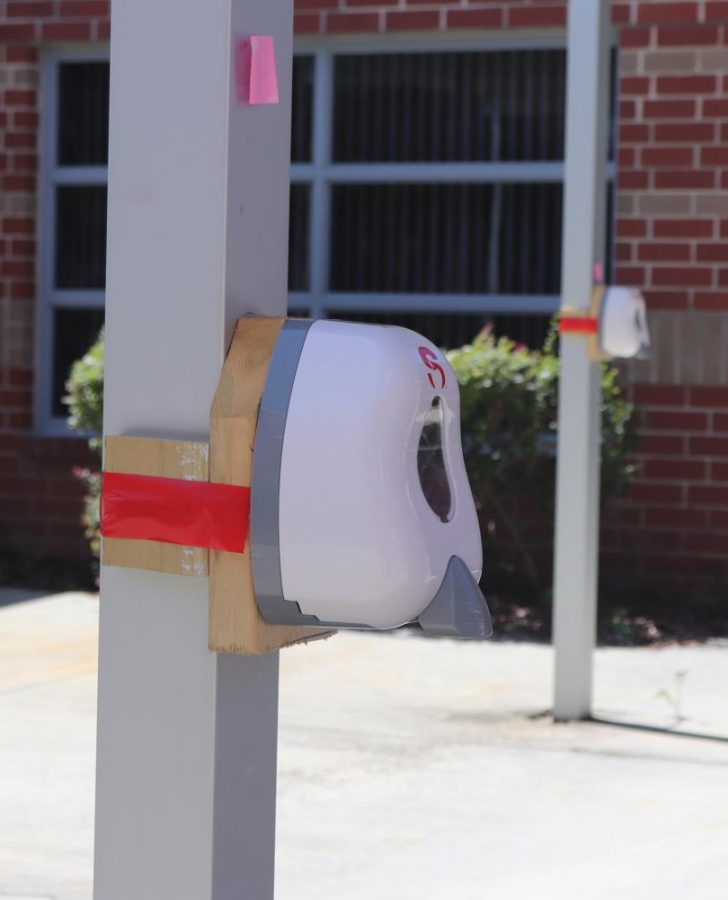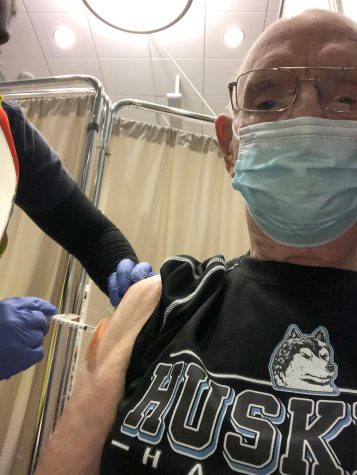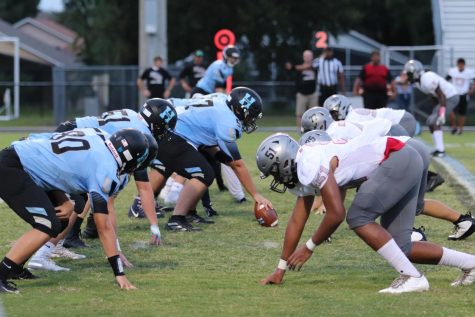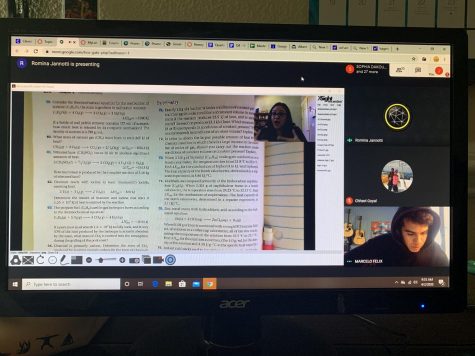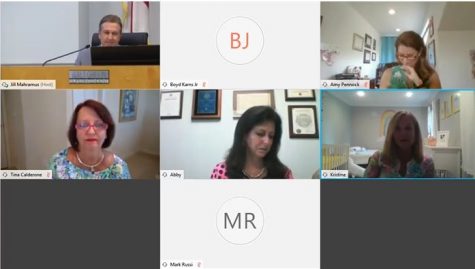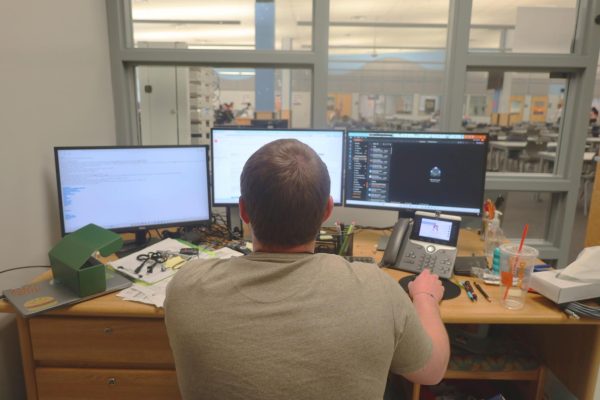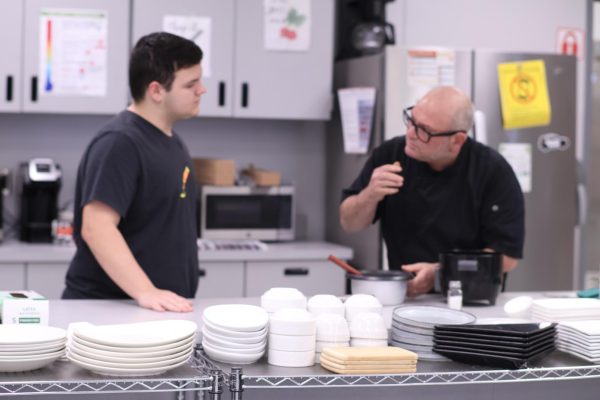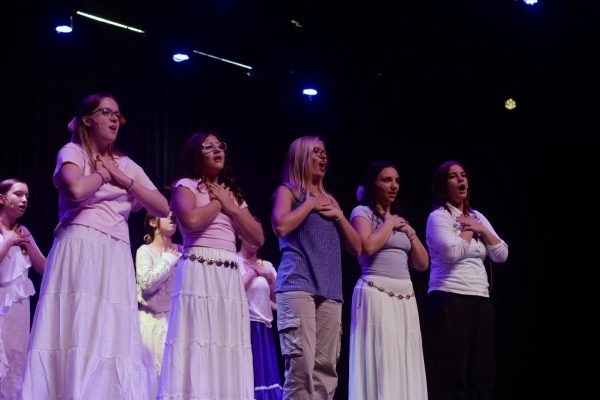First day brings big changes
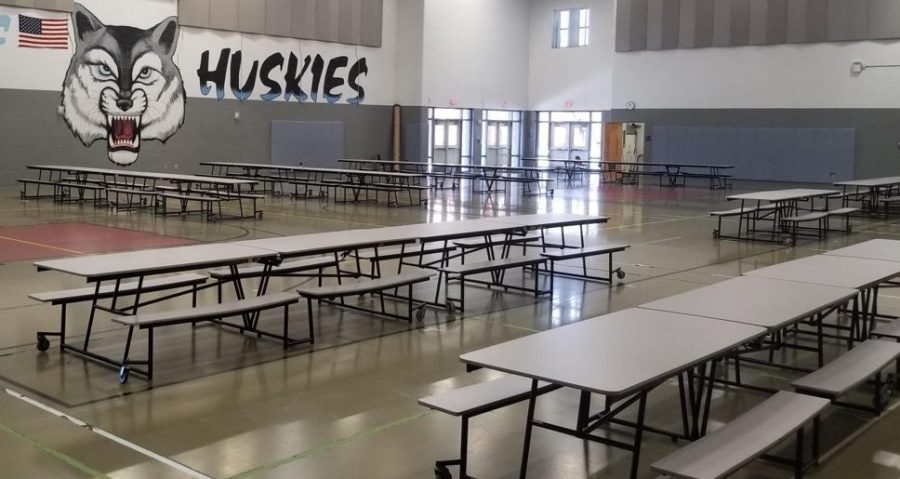
photo by Roy Decosta
The old gym will serve as a second indoor eating area. Half of the tables in the cafeteria were brought to the old gym, and this space will no longer be multi-functional.
From masks and hand sanitizer dispensers to one-way traffic and partitions, students will encounter a much different campus layout when they return to school on Monday, Aug. 17. After five months off, roughly half of the student body will make their way back to start an unconventional school year.
Arriving on campus, the changes will be immediately noticeable, as students can go through six different entrances, three by the bus loop and three by the parking lots, different from the two entrances on each side of campus in years prior. Different people will be stationed at these entrances, checking that students are wearing masks and ID’s.
To move around campus, a one-way route was implemented that includes each building to reduce contact with others. When changing classes, students will follow this traffic pattern through the courtyard, using the staircases on the inside of campus to go upstairs, and the back staircases on the outside of campus to go downstairs, through the downstairs hallway and back out to the courtyard. To see the campus traffic pattern and student entrances, click here.
“It seems a little confusing, but we will be placing signs and arrows everywhere to help guide students,” school administration manager Roy Decosta said. “The first day, everyone will have a map to circle where their classes are, and figure out the best route to get there.”
Hand sanitizer dispensers will be also located on poles every 10 feet to maintain a safe environment and lockers will not be issued out this year.
Additionally, eating areas have expanded for lunch. Half of the tables in the cafeteria were relocated into the old gym, which will now be the second indoor eating area. The entire courtyard is also available. Picnic tables are located around the school, and students are allowed to bring picnic blankets to eat in the grass. Every table will have tape to indicate where students are not allowed to sit, allowing for up to three people per table.
Though these policies may help reduce the risk of catching coronavirus, if someone shows signs of having the virus, there are measures put into place to handle it. Once someone shows symptoms, they will be taken to a separate COVID clinic in building 3, and the class the student was in will be evacuated and decontaminated. Contact tracing will be done, and those in close proximity with the person contracting or suspected to have COVID-19 will have to get tested outside of school.
However, coronavirus procedures will not detract from overall school security measures. Both masks and ID’s will be required. While students are switching between classes, the outside of campus will be monitored. Fire drills and lockdown drills will still occur, but they will look different.
“Due to federal laws we will continue to have our drills, but we will be adhering to social distancing rules during those drills. For example, there will be no cramming of students into hard corners,” Decosta said.
Major shifts were made in the classroom to accompany the modifications in the courtyard. Following social distancing guidelines, the number of desks in traditional rooms have decreased and are separated six feet apart, with one student placed at a “desk” consisting of two desks pushed together. Teachers will receive their own cleaning kits for their classroom, and each student will receive their own clear partition to enclose their workspace.
In addition to the physical changes in the classroom, the schedule has also changed. Unlike previous years, where Wednesdays included all seven classes, the block schedule will now alternate between blue and black days exclusively. Every other week, students will follow the same schedule.
Most teachers will also have to teach face-to-face and Seminole Connect students at the same time. Every teacher that will teach through both formats will be provided with a webcam set-up to interact with all of their students, whether in-person or virtual.
“We are working on ensuring that [teachers] will have the technology they need,” principal Robert Frasca said. “Again, this will be a work in progress as teachers navigate this new way of teaching, so everyone is going to have to remain patient as we expect there to be many bumps in the road.”
In classrooms that have shared workspaces and tables, it will also look a little different. In Culinary, one of the most popular, hands-on classes offered, clear plastic dividers will be installed at each table to separate students. Despite the challenges, culinary teacher Matthew Thompson hopes to keep the class as interactive as possible while being cautious.
“I would be surprised if I had more than three people in a kitchen,” Thompson said. “We could make it work. [Each kitchen has countertops] about six feet apart, so we could have two people work in the kitchen on opposite sides, and someone at the tables working on something else. And then they would just rotate.”
As more developments occur, current outlined policies are subject to change. However, masks are required for all students and staff, except during lunch and areas where it is safe to take a mask break. Although there will be challenges balancing coronavirus and school, Frasca is hopeful for another positive school year.
“I hope that we will be able to provide some normalcy and stability to our students and that we will be able to get back to normal operating procedures and activities sooner than later, when things are much safer,” Frasca said.
Your donation will support the student journalists of Hagerty High School. We are an ad-free publication, and your contribution helps us publish six issues of the BluePrint and cover our annual website hosting costs. Thank you so much!

